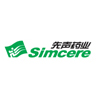
 Four years of qualification
Four years of qualification
 Audited Supplier
Audited Supplier
In This Store
Category:Finished Dosage > Cardiovascular Preparations
Product Name:Amlodipine Maleate Tablet
Price(USD):0.00
Company:Jiangsu Simcere Pharmaceutical Co., Ltd.
Factory Location: Simcere(Hainan)
Main Sales Markets: North America,Central/South America,Western Europe,Eastern Europe,Australasia,Asia,Middle East,Africa
Monthly Production Capacity: 100, 000, 000
Packaging Information: Box Carton
Sample Provided: no
Payment Terms: L/C, T/T, D/P, Western Union, Paypal, Money Gram
Amlodipine Maleate Tablets
Generic name: Amlodipine maleate tablets
Brand name: Anliping
Composition: Rac-2 - [(2-aminoethoxy) methyl] -4- (2-chlorophenyl) -1,4-dihydro -6-methyl-3,5-pyridinedicarboxylate Ethyl-5-methyl ester maleate.
Chemical Structure:

Molecular formula: C20H25ClN2O5·C4H4O4
Molecular weight: 524.96
Description: White film tablet
Strength: 5mg
Indications:
1.Hypertensive disease: This product can be used alone or in combination with other antihypertensive drugs.
2. Chronic stable angina and variant angina: This product can be used alone or in combination with other anti-anginal drugs.
Dosage and Administration:
1. Treatment of hypertension commonly used initial dose of 5mg, once daily, the maximum dose of 10mg, once daily. Weak or elderly patients with liver dysfunction in patients with an initial dose of 2.5 mg, once daily; this dose is also the original use of other antihypertensive drugs need to be treated with the initial dose of the product.
Dosage adjustment should be based on individual patient response. The general dose adjustment should be started in 7 to 14 days. If clinically needed, dosage adjustments should be started sooner when the patient is closely monitored.
2. The recommended dose for the treatment of angina is 5 to 10 mg once daily. Lower-dose therapy is recommended in elderly and patients with hepatic insufficiency, and the effective dose for most is 10 mg / day.
Adverse Reactions:
Patients with the product at a dose of 10mg / day can be well tolerated. The most common side effects in placebo-controlled trials of treating hypertension or angina are headache, edema, fatigue, drowsiness, nausea, abdominal pain, flushing, palpitations and dizziness. In these clinical trials did not find this product related to clinical abnormalities in the test indicators.
Fewer side effects were observed after going on the market with alopecia, changes in bowel habits, joint pain, weakness, back pain, dyspepsia, dyspnea, gingival hyperplasia, men's breast feminization, hyperglycemia, impotence, urinary frequency, leucopenia, General malaise, mood changes, dry mouth, muscle spasms, myalgia, peripheral neuropathy, pancreatitis, increased sweating, syncope, thrombocytopenia, vasculitis and visual impairment. In most cases, the causal relationship between the above changes and this product has not yet been determined.
Allergic reactions are rare, including pruritus, rash, vasogenic edema and erythema multiforme.
There have been very rare hepatitis, jaundice, liver enzymes reported increased (usually consistent with liver juice deposition). Some cases of hospitalization due to severe illness are reported to be associated with the use of amlodipine. In many cases, its causal relationship can not be determined.
Similar to other calcium antagonists, the following adverse events have also been reported in a small number, but the events are difficult to distinguish from the natural history of underlying diseases such as myocardial infarction, arrhythmia (including ventricular tachycardia and atrial fibrillation), and chest pain.
Contraindications:
For dihydropyridines or any allergic to this product banned people.
Precautions:
1.WARNING: Especially in those with severe coronary artery disease, there is a rare risk of increased angina frequency, prolonged and / or worsening angina, or acute myocardial infarction at the onset of calcium antagonist therapy or at increased doses. These mechanisms of action are not yet clear.
2, the product caused by vasodilation is a gradual occurrence, taking this product after the occurrence of acute hypotension rarely reported. However, in patients with severe aortic stenosis, when combined with other peripheral vasodilators, attention should be drawn.
3, the use of patients with congestive heart failure: In general, calcium antagonists should be cautious in patients with congestive heart failure. However, in the placebo-controlled PRAISE study, patients with congestive heart failure (NYHA III-IV) who received digoxin, diuretic, and ACEI at the same time were followed up for an average of 14 months, Patients have a negative impact on survival or morbidity (fatal arrhythmias, acute myocardial infarction, and hospitalizations due to increased heart failure). In 697 NYHA patients with heart failure, 8 ~ 12W placebo-controlled clinical study, by measuring exercise tolerance, left ventricular ejection fraction and clinical symptoms and other indicators show that this product does not make patients with heart failure symptoms Increase.
4, the use of impaired liver function patients:As with all other calcium antagonists, the half-life of this product is prolonged when liver function is impaired, but the appropriate recommended dose has not yet been established and care should be taken when using this product.
5, the use of renal failure patients:This product is only 10% of the original form of urine excreted by the urine. This product plasma concentration changes and renal damage was not related to the degree. Therefore, these patients can use the normal dose. This product can not be dialysis.
Pharmacology and Toxicology:
This product is calcium ion blockers (ie, slow channel blockers or calcium antagonists), blocking calcium ions across the membrane into the myocardium and vascular smooth muscle.
The antihypertensive effect of this product is the direct relaxation of vascular smooth muscle. The exact mechanism of action for angina pectoris has not yet been completely determined, but it can reduce the total peripheral vascular resistance, relieve coronary spasm, reduce cardiac postload, reduce cardiac energy expenditure, and oxygen demand by dilating peripheral arterioles and coronary arteries, To relieve angina.
Pharmacokinetics:
According to statistics, healthy subjects after oral administration of this product 5mg, about 7.6 hours peak plasma concentration, the peak concentration of about 3.05ug / ml, elimination half-life of about 48.6 hours. This product is widely metabolized by the liver as inactive metabolites, metabolites excreted by the urine.
Storage:Shading, sealed and preserved.
Packing:Aluminum plastic. 5 mg × 7Tablets / box; 5 mg × 10 Tablets / box.
Shelf-life:24 months

Contact Us
Tel: (+86) 400 610 1188
WhatsApp/Telegram/Wechat: +86 13621645194
+86 15021993094
Follow Us:




 Pharma Sources Insight July 2025
Pharma Sources Insight July 2025


